MAVERICK LIFE TRAVEL
Digital Nomad: An idyllic life in Nicaragua
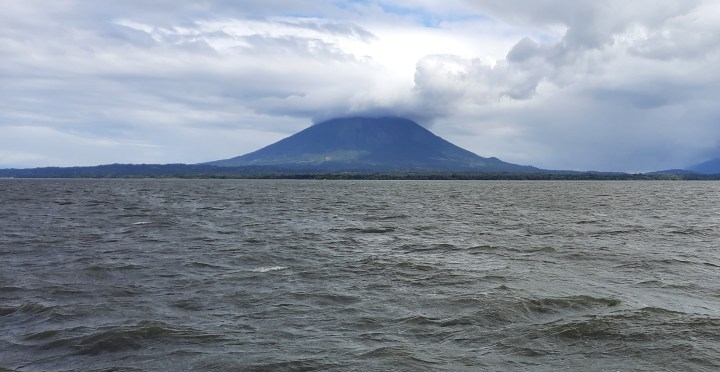
The US State Department’s travel advisory for Nicaragua warns: ‘Reconsider travel to Nicaragua due to Covid-19, civil unrest, crime, limited healthcare availability, and arbitrary enforcement of laws.’ Who would have thought that paradise could be found here?
“The sea’s a little high today,” said a fisherman near the wharf on Big Corn Island.
It turned out to be a classic Caribbean understatement.
We were headed for Little Corn Island, 15km away, and 60km off the coast of Nicaragua. The only way to get there was on a panga, a speedboat designed to take about 20 passengers. There had been a raging storm and powerful winds all morning, and their after-effects soon became apparent as the boat ploughed through mountainous seas, riding up swells that loomed like giants, crashing into troughs amid explosions of spray, then riding the next swell… and the next… and the next.
After a while you just had to let go of your fear and exalt in the moment, to revel in this wild roller coaster ride, to feel the sheer exhilaration of being alive, while the captain stood resolute at the wheel and the leaden skies threatened another downpour and our destination hove closer.
When we reached Little Corn Island about an hour later we were drenched, pummelled, jarred from head to toe, shaken and shook up – it had been one hell of a ride.
The ride began in Costa Rica’s capital, San Jose, where we had to get a PCR test for Covid-19; the test was a prerequisite for entering Nicaragua.
It was an extremely unpleasant experience. The nurse shoved a probe down my throat, triggering the gag reflex (a very unfunny gag), then put a probe up my left nostril and into my prefrontal cortex, triggering a silent scream, then pushed a probe up my right nostril deep into my brain, triggering an actual scream.
We got the results the next day. Negative for Covid-19. I’ve never felt so positive about being negative, and shortly after midnight that night my travelling companion and I were on a bus bound for the Nicaraguan capital, Managua.
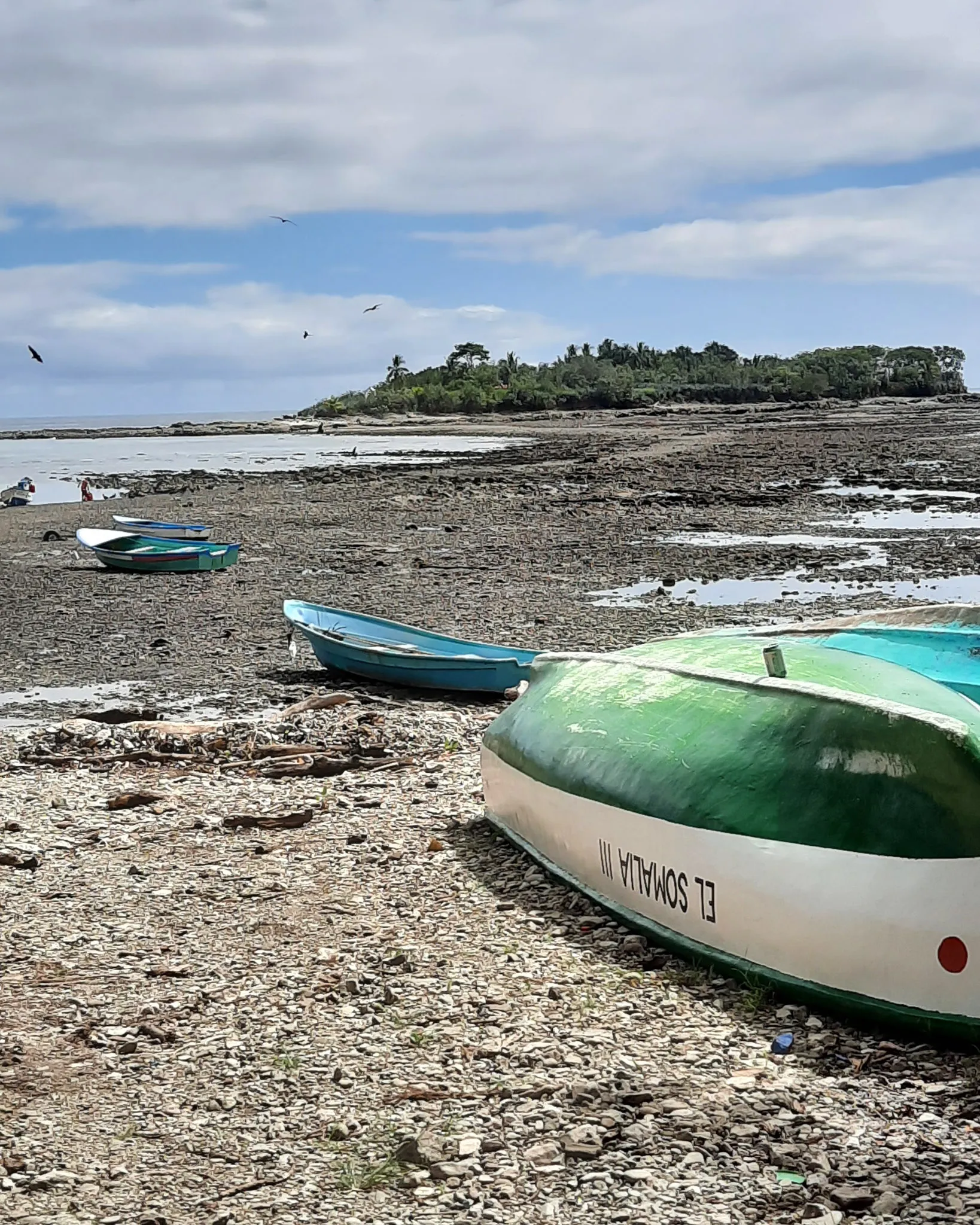
The walkway to the cemetery on Cabuya Island. Photo by Caspar Greeff
We reached the border at Peñas Blancas several hours later. Getting out of Costa Rica was easy, but on the Nicaraguan side a customs official grilled us – the only two gringos on the bus – for a couple of hours. Our South African passports were photographed, then hustled away and given to a senior official to scrutinise, while we were subjected to the same six questions, in slightly different format, over and over again: How long are you staying? Where are you staying? When are you leaving? How are you leaving? How much money do you have? Why are you coming to Nicaragua?
At one stage, long after all the other passengers had boarded the bus, the driver came in and looked at me imploringly, but I shook my head… “can’t make this go any faster, I’m afraid”.
If the Nicaraguans didn’t let us through we were well and truly up Shit Creek without a paddle, because the border was one-way traffic: Nicaragua was letting people in from Costa Rica, but Costa Rica was only letting people out to Nicaragua.
I imagined being stuck in perpetuity in the no-man’s-land between Costa Rica and Nicaragua, a deranged feral begging bus passengers for scraps of tortillas and tamales. There was a whiff of despair in the air.
Then the customs official looked at us, said “ listo [ready]” and stamped our passports.
We were authorised to enter Nicaragua.
We got off the bus at Granada, a beautiful old colonial town on the shores of Lake Nicaragua (also known as Lago Cocibolca), the largest lake in Central America. Once it was home to thousands of Caribbean bull sharks, but they’ve been fished out – the last time one was seen in the lake was in 2000, and now the bull sharks are the stuff of legend.
The historical centre of the town has narrow cobblestone streets and brightly painted houses, and horse-drawn carriages line up alongside the Parque Central to take non-existent tourists for rides and in the distance rises Mombacho, a huge stratovolcano, which last erupted in 1570 and is now extinct.
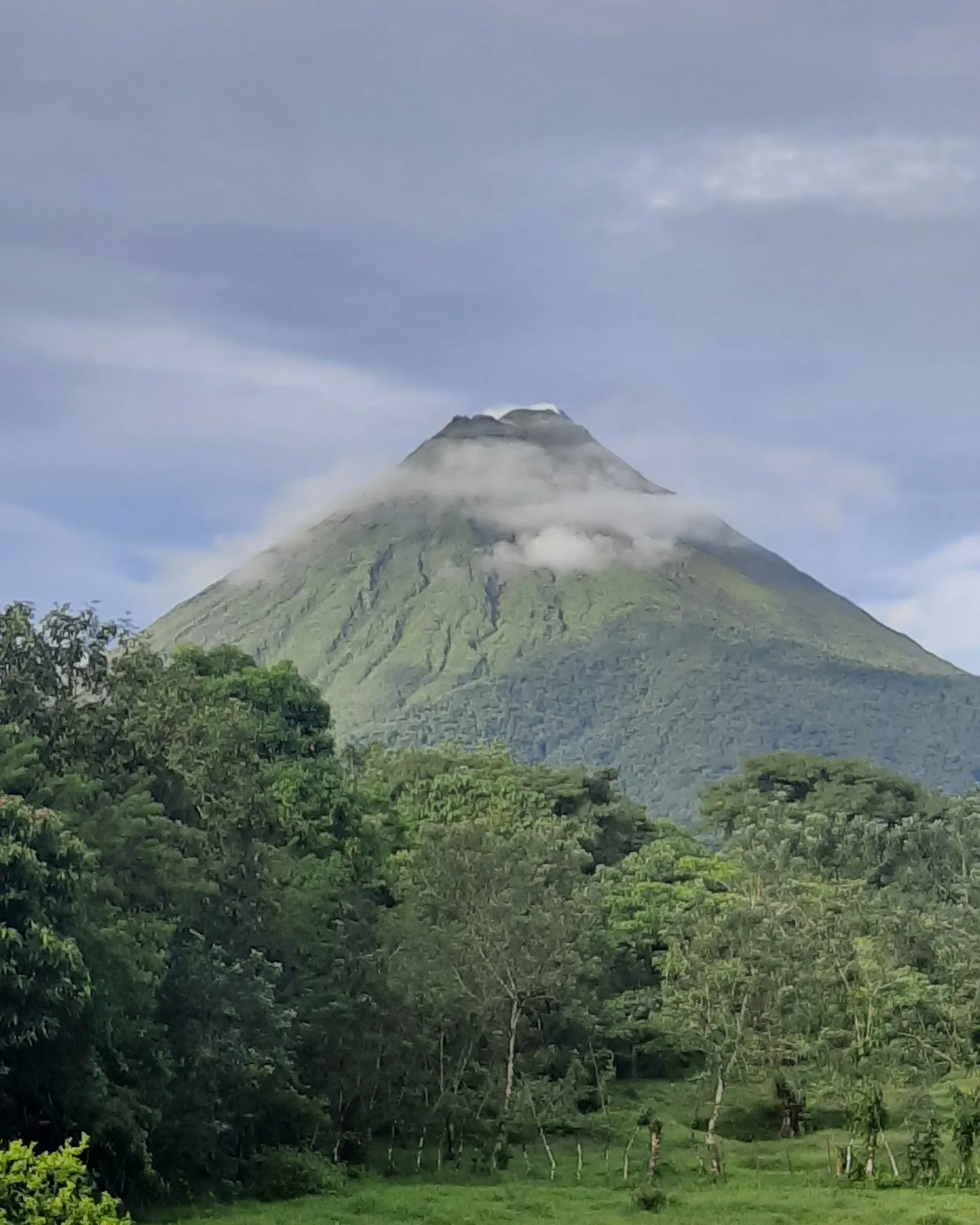
Arenal volcano, La Fortuna. Photo by Caspar Greeff
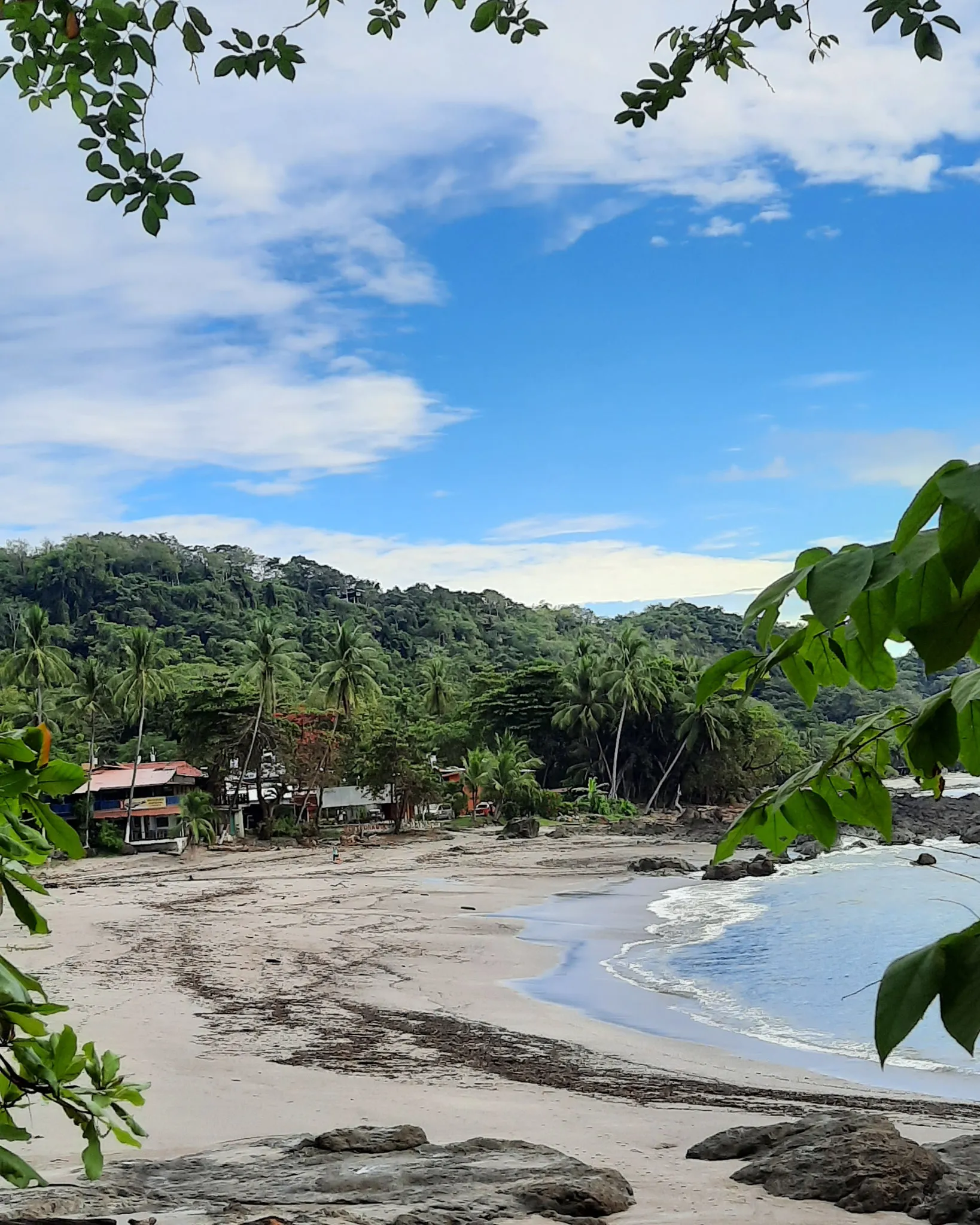
Montezuma Hotel. Photo by Caspar Greeff
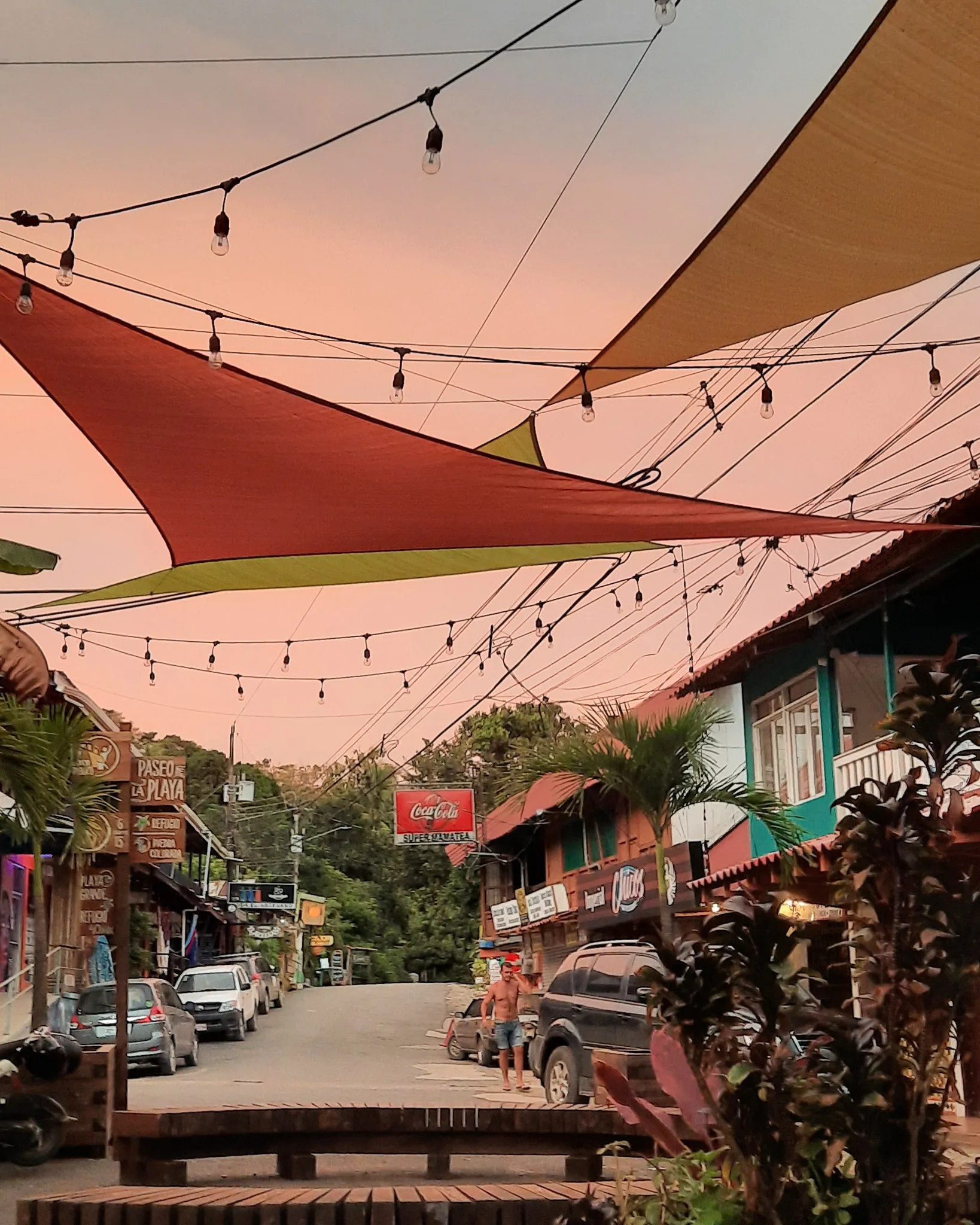
The village square in Montezuma. Photo by Caspar Greeff
Very much active is the nearby Masaya Volcano, and we went there one night and peered down into the crater, which was belching noxious gases, and inside the crater flames were roiling like crimson waves breaking on a dark beach.
“It looks like the gate to hell,” I remarked to our guide.
“Yes, it is,” he replied. “There are seven gates to hell, and this is one of them. Another one is in Siberia and… ”
A woman who had overheard this conversation came up to us and addressed the guide in rapid-fire Spanish, clearly unhappy about something.
She strode off and the guide explained what had happened. “She says there are no gates to hell; she says that the Bible states this.”
He shook his head. “Catholics… ”
A couple of days later we were on another bus, heading south, back in the direction of Costa Rica. We got out at the town of Rivas, took a taxi to San Jorge and then boarded a ferry on the shore of Lake Nicaragua.
Our destination: Ometepe, an island that’s guarded by two volcanoes, the active Concepción Volcano in the north, and the extinct Maderas Volcano in the south.
Mark Twain travelled across Lake Nicaragua in 1866, and was moved to write:
“Out of the midst of the beautiful Lake Nicaragua spring two magnificent pyramids, clad in the softest and richest green, all flecked with shadow and sunshine, whose summits pierce the billowy clouds.
“They look so isolated from the world and its turmoil – so tranquil, so dreamy, so steeped in slumber and eternal repose.
“What a home one might make among their shady forests, their sunny slopes, their breezy dells, after he had grown weary of the toil, anxiety and unrest of the bustling, driving world.”
And indeed Ometepe was a refuge from “the bustling, driving world”, a place of almost mystical beauty, an island from the pages of a boy’s adventure book or perhaps from the mind of a movie director musing on the setting for a new Indiana Jones or King Kong film.
Waterfalls, forests, jungle, sun-dappled creeks, horses on the narrow streets, the gentle lapping of the lake, and the indomitable, ancient guardians at either end.
I had heard about two other Nicaraguan islands; a man I met in a bar in Guatemala described the Corn Islands as “the most beautiful, chilled-out place in the whole of Nicaragua”, and so we wrote “finis” to our Ometepe idyll and were on a long-distance bus on Christmas Day, bound for Managua.
The following day we got a flight on a small aircraft to Big Corn Island, and then hazarded the sea crossing to Little Corn Island.
It turned out that we had crossed over into an alternate reality. There are no cars or motorbikes on the island, and goods are ferried from the wharf in wheelbarrows or handcarts.
Residents say there is no Covid on the island, and there are no restrictions, no curfews, no masks… life here carries on just as it always has, except that there are only a handful of tourists, along with about a dozen expats and maybe 2,000 islanders.
I’m living on a diet of lobster, fish, rice and beans, sunlight, ocean breezes and beer.
Sunsets here are – literally – golden. The sky, the sea, the clouds, everything turns gold, more shades of gold than I ever imagined possible – like being immersed in one of the English landscape painter William Turner’s palettes – and every evening brings more fantastic and extravagant variations on the theme.
Then there’s the warm Caribbean sea that goes from blue to green to turquoise to silver, the palm trees hissing in the breeze, the bursts of brilliant red from hibiscus flowers, the coves and bays and beaches…
There’s no electricity every day between 6am and 1pm, and being a digital nomad who has to log into cyberspace five days a week is somewhat precarious, but the hotel where I am staying has solar power, and when the WiFi goes down my cellphone with its local SIM card functions as a hotspot.
And so the days drift away, no past, no future, only the endless and ever-mutable present. It feels like a dream, and if it is I’m in no hurry to wake up. DM/ML

















 Become an Insider
Become an Insider
Comments - Please login in order to comment.